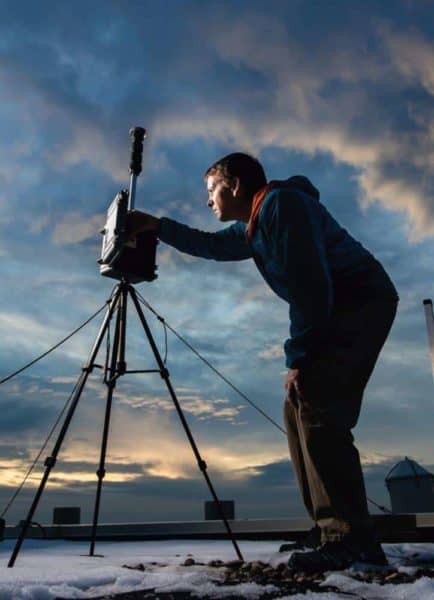The Great Salt Lake reached historic low levels in recent years and continues to dry as a result of drought and water diversions. As water levels decrease, the exposed area of dry lakebed increases, creating major sources of mineral dust. Declining water levels are a major concern for scientists and the general public alike, but air quality is often overlooked as one of the potentially harmful consequences of receding lakes.
New research from BYU’s geological sciences department found that about 90 percent of dust in Utah’s Wasatch Front comes from the west desert, an area that was once covered by the prehistoric Lake Bonneville but that is now a dried lakebed. More recently, shallow lakes like Sevier Dry Lake and the Great Salt Lake, which are remnants of Lake Bonneville, have been exposed as water inflows are diverted for consumptive use. Researchers predict this percentage is only going to increase as water levels decline and more dry lakebed is exposed.
“Lakebeds are muddy, but as they dry out, they become a dust pan,” said study co-author and former BYU graduate student Michael Goodman. “Dry lake beds are becoming a significant dust threat to nearby communities, not only impacting air quality but also impacting soil and what can grow in it.”
Researchers collected and compared over 100 dust samples from three different sources: dried lakebeds from Sevier Lake and the Great Salt Lake in Utah’s west desert, urban areas along the Wasatch Front and mountain snowpack from the Uintah Mountains. The team found salts common to dried lakebeds in the urban and mountain areas, suggesting that dust from dried lakebeds is transferred to these other locations.

While most dust along the Wasatch Front comes from drying lakebeds, researchers said that the most dangerous contaminants are still coming from urban areas.
“The dust we sampled contained potentially toxic metals, and those come primarily from the urban and mining areas,” said BYU geology professor and co-author Greg Carling. “Even though the urban and mining area contributes only a small fraction of the dust load, it contains the most contaminants, such as antimony and copper.”
Carling said whether it’s the drying up of lakes or the emission of dangerous chemicals, our actions often have unintended consequences that may negatively affect the environment. The team also acknowledges that further knowledge of dust sources may be useful for understanding how water diversions, climate change and population growth affect the regional dust cycle in the future.
“Most people probably wouldn’t think that something out in the west desert has a direct impact on the Wasatch Front,” Carling said. “But we have to consider that there are consequences for our actions, many of which are indirect.” Researchers also said dust should be considered an important factor in poor air quality and human health, and the amount of dust blown into urban areas could be lowered through preserving lakes.
Funding for the research came from the National Science Foundation and the Utah Division of Forestry, Fire, and State Lands. The study, published in Chemical Geology, is co-authored by BYU geology professors Barry Bickmore, Stephen Nelson and Kevin Rey, as well as former student Colin Hale. Diego Fernandez, a professor from the University of Utah, and Jeffrey Munroe, from Middlebury College, also assisted with the research.


